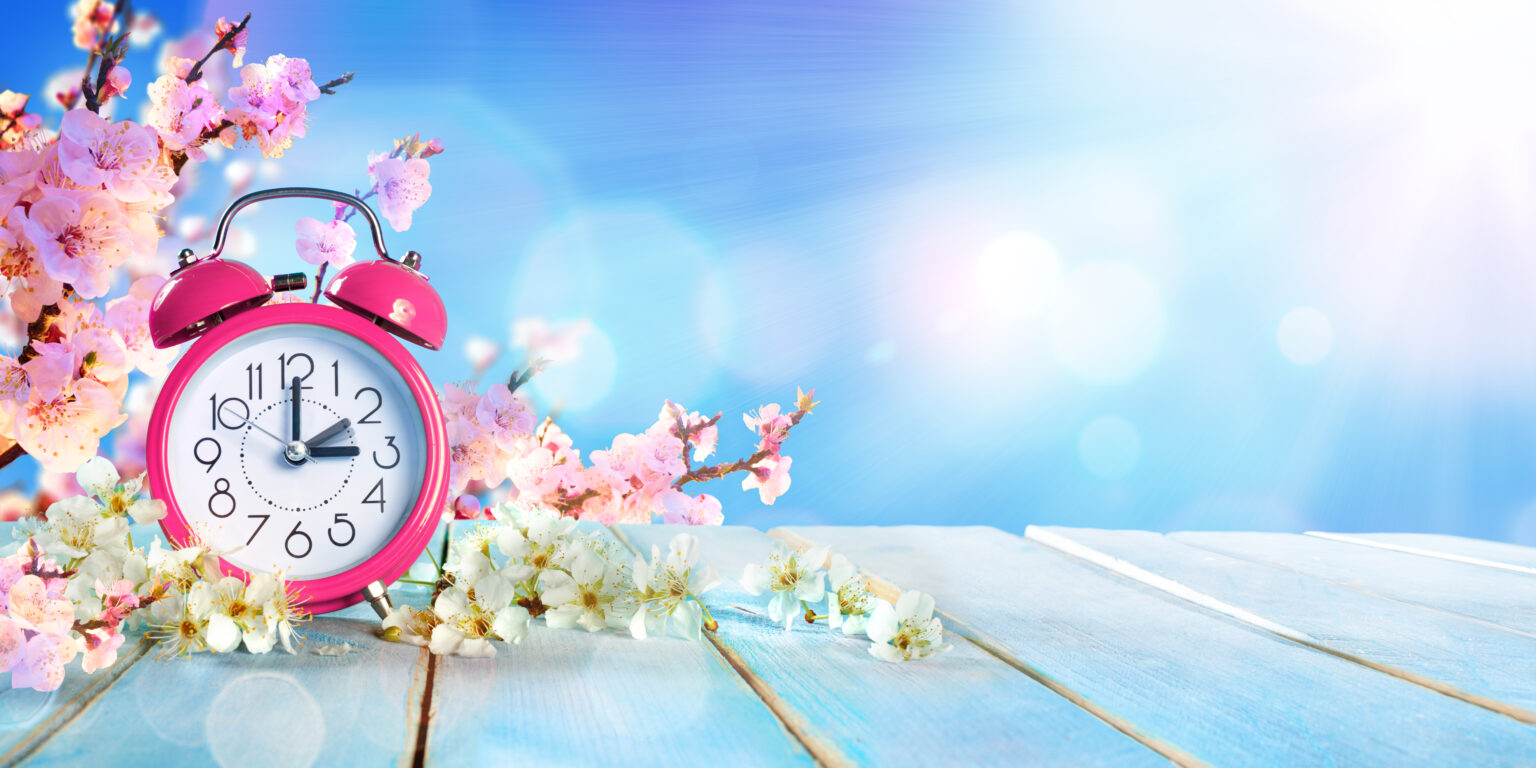Daylight Savings Time (DST) starts this Sunday, March 9th, but what does this actually mean? Are we gaining an hour or losing an hour of sleep? Americans will jump their clocks forward an hour – SPRING IS FINALLY HERE! While we are losing an hour of sleep, longer days are coming!
For Texans, this means backyard BBQs and long summer nights. The kids can play in the yard all day because the sun doesn’t set until 7:30 pm. But why does DST exist? What’s the purpose of Daylight Savings Time? Let’s explore the origins and evolution to better understand Daylight Savings Time and its impact.
What is Daylight Savings Time?
In 1784, Benjamin Franklin thought, “If we wake up earlier in the morning to start our day, we could save money by using fewer candles at night!” It was a simple observation at the time, but this is the idea that eventually became Daylight Savings Time.
DST was then formally adopted by Germany over a century later during World War I in 1916. The United States followed two years later. Their idea was to make the day longer in order to preserve the use of coal. If the days were longer, the sun could provide an extra hour of natural light, therefore decreasing the need for artificial light powered by coal.
Over the years, the concept has remained the same, with the purpose shifting to preserve energy. By shifting the clock forward in spring, we can maximize the use of natural daylight in the evenings, reducing electricity consumption.
What is the Effect of Daylight Savings Time?
Aside from the frustrations of losing an hour of sleep in the spring and gaining it back in the fall, DST may have more impactful effects on our health and well-being. Studies have shown that energy consumption may actually be higher due to DST, your mental health can be negatively impacted, and car crashes increase.
Energy Consumption
Studies show that the idea of DST helping us conserve electricity usage has become moot and maybe even counterproductive. According to EnergyBot, home lighting only accounted for 10% of electricity consumption throughout the United States in 2019. Most Americans have made the switch to LED bulbs in their home, which use about 75% less energy than traditional bulbs. The research also showed that air conditioning accounted for the highest use of electricity consumption in American homes. With summer days being longer, families are running their air conditioning further into the evening.
Health and Safety
Health professionals have reported that DST can harm your mental health. The time change affects your sleeping schedule, and sleep is directly tied to your mental health. Whether you have trouble falling asleep or staying asleep, a lack of proper resting time can cause irritability, anxiety, and depression.
Car crashes also increase after the clock changes. In the spring, research has shown a 6% increase in car crashes after the time change, likely due to drowsy drivers on the road early in the morning. When time falls back in November, car crashes also spike as drivers try to adjust to an earlier sunset. Visibility is limited for drivers in the dark. As commuters are traveling home from work, the risk of a collision increases.
As Sunday approaches and our clocks jump forward, prepare to lose an hour of sleep and give your body time to adjust. If you are commuting, be aware of the time change and be extra cautious while driving in the dark early in the morning.












